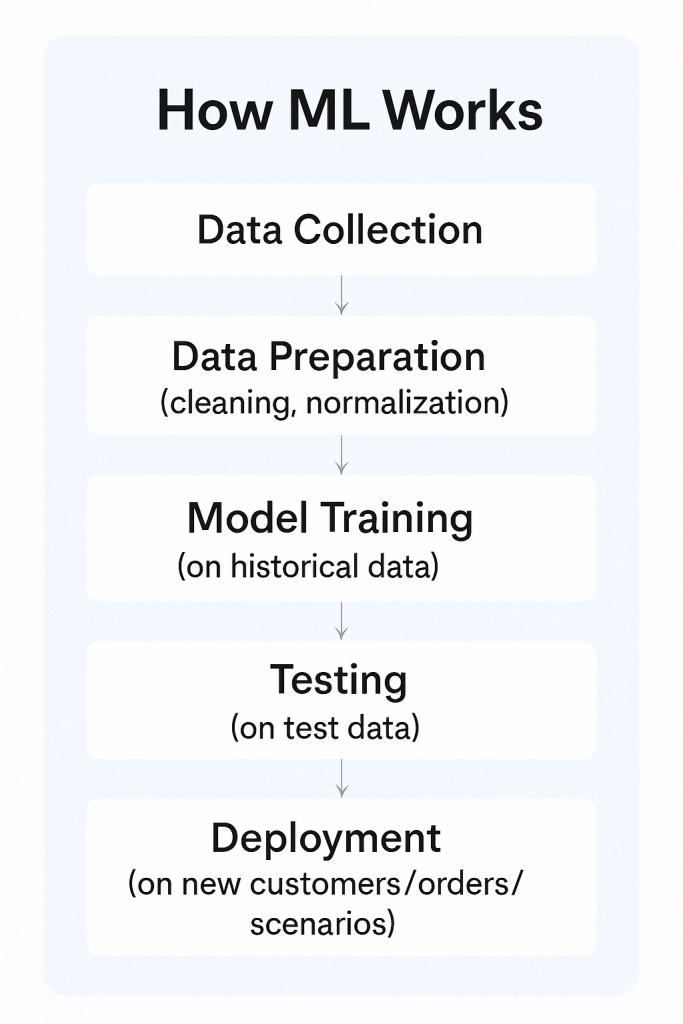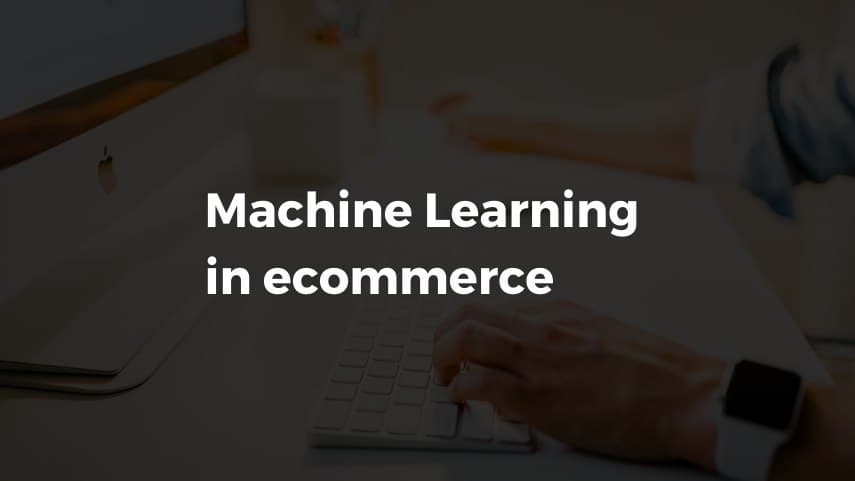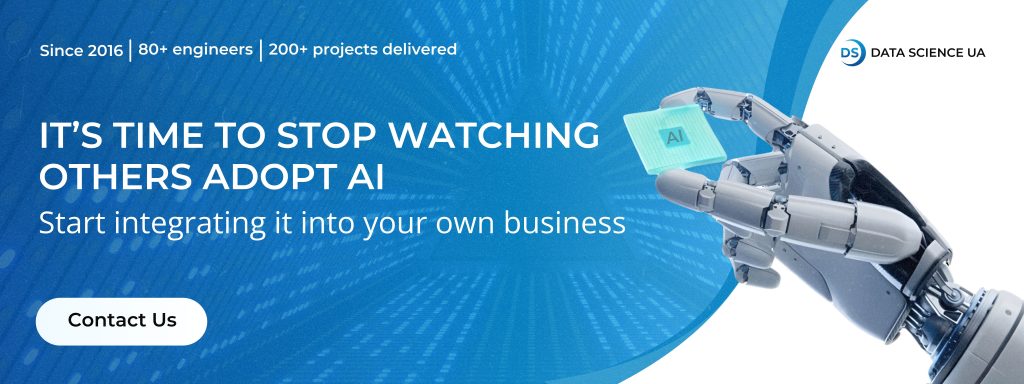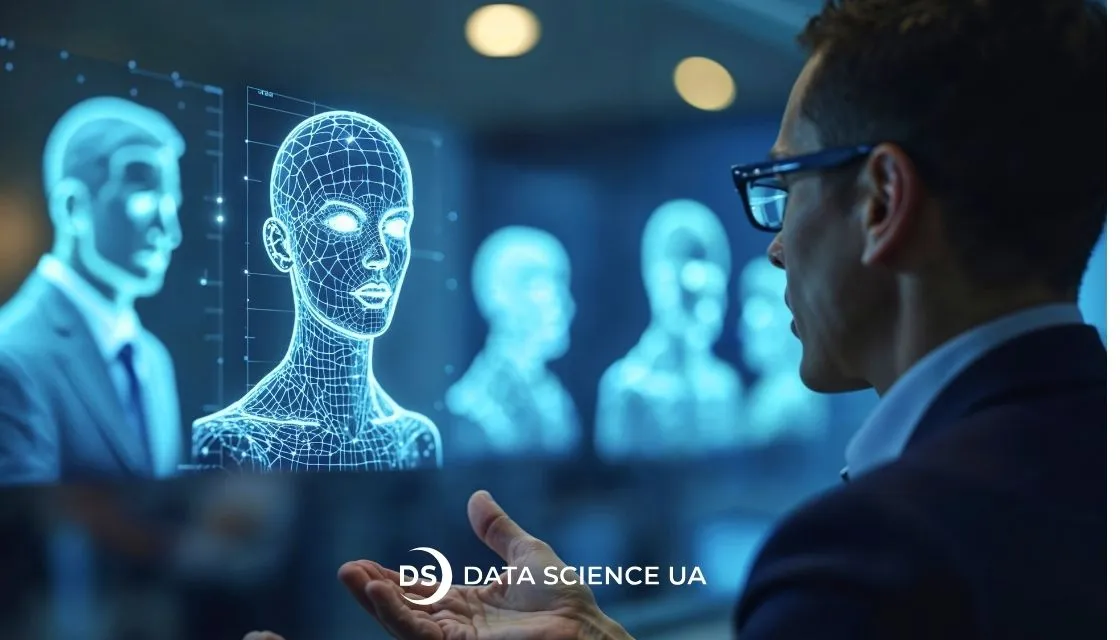Machine Learning in Ecommerce
In 2025, e-commerce faces new challenges: high competition, an increase in logistics costs, a shortage of qualified specialists, and growing customer expectations. ML becomes a tool that helps the business not only adapt to these conditions, but also find new growth points. McKinsey notes that 27% of companies actively implementing ML and AI in e-Commerce record an increase in profit by 5-10% during the first year after launching decisions. The primary areas of application include recommendations, pricing, demand forecasting, and promotion optimization. We are not talking about “vague transformation”, but about a very specific metric – profit. Those who build work with ML systematically (and not just buy a subscription for the next module) receive a competitive advantage due to the accuracy of the reaction to changes in demand. This article explains what Machine Learning is, how it is used in e-commerce, and how to start using it in e-commerce.
1. What is machine learning?
1.1. Definition of machine learning
Even though machine learning has been actively used in many fields, there are very few who know what it is. However, this is very important for those who want to use it so that not confuse it with anything else.
In simple terms, machine learning is a science that provides computers the ability to learn new information and become better with experience. Basically, machine learning is a set of techniques and algorithms that enable computers to act without being explicitly programmed. If you have enough data, you can make a model that will analyze it and discover any hidden patterns or insights in it. The model can also be used for some kind of prediction or decision-making process.
1.2. Difference between machine learning and artificial intelligence
Even more often than machine learning, you can hear about artificial intelligence as more and more businesses try to use it. These are not the same, but very related terms. Machine learning is a part of AI, but it only tries to learn from data to make predictions in the future, while AI is a much broader concept, which aims to simulate the humans’ way of thinking. With machine learning being the main subset of AI, it is precisely machine learning that many entrepreneurs want to implement.
How Machine Learning Works
Most businessmen have heard about machine learning. But how it actually works – units know. Let’s look at the steps, simply and without overloading with terms. If completely, this is a way to teach a computer to recognize patterns in the data and draw conclusions-without explicit programming of each step. See more in semantic segmentation.
Example: You have an online store with 100,000 customers. Everyone leaves a trace – that he looked, that he put in the basket, which he refused, what time he came from, and from which device. For a person, all this information is noise. For the car structure. If you train the model correctly, it will be able to predict: which of the customers will buy tomorrow, who, in a week, and who, never at all.
To make it easier, imagine the work of ML as a chain of 5 steps:

An example of how machine learning works in workplace
Compare this with the training of an employee:
- You give him archives of old cases (data).
- Explain what was successful and what is not (marking).
- He studies in practice (training).
- Check whether it will cope with the new client (validation).
- If so, you start work (production).
2. How is machine learning used in ecommerce?
2.1. Benefits of machine learning in ecommerce
Now, what is it that a machine learning development company can do for an ecommerce company? Apart from apparent increases in profits and time saving, machine learning systems can make a firm more adaptable to changes. With constantly varying trends and tastes, adaptability is a great advantage, as it will keep a company afloat. Another reason to use machine learning techniques is its ability to create a personalized experience for each customer. Loved and respected companies become brands, and easily recognizable brands are much more likely to succeed on the market. Finally, machine learning can help make data-based decisions, which is precisely what every successful manager wants.

What are the benefits of using ML in e-commerce?
2.2 Machine learning use cases in ecommerce
So, here are a few possible uses of machine learning in ecommerce:
- Targeted campaigning
- Dynamic pricing
- Fraud protection
- Optimized search
- Customer support
- Inventory management
- Personalized experience
- Competitors analysis
- A/B testing
- Predictive analytics
Let us take a closer look at each of these cases, but if you want to learn more, refer to natural language processing services.
Targeted campaigning: the most popular way of machine learning in ecommerce. It allows businesses to divide their customers into clusters to work with each group separately. For example, you may want to offer one product to a teenager and another to a businessperson. Machine learning uses personal and behavioral data and purchasing history to determine to which group each customer belongs effectively. This way, you can advertise your product to a particular group of clients without spamming those who are less likely to be interested in this product.

Customer segmentation may be used for dividing the clients into groups and working with each separately.
Dynamic pricing allows automatic price adjustments depending on different factors such as time, season, geographical location, purchasing history, device a person uses to access the page, etc. It is a common practice to charge, for example, higher prices on weekends and lower – on weekdays for airplane tickets. Another example might be a discount offered to a customer that has visited the page of the product several times. The machine learning model will notice that the client is interested in a specific product and will offer a personalized proposition.
Fraud protection: with a vast amount of data, it is much easier for the model to detect anomalies and fraud. Machine learning in ecommerce can determine that a credit card was used from an unusual location or that the transaction was suspicious. It may also learn to detect whether a person is going to retract the payment after the purchase. It will then notify the administrator of the website about the possible threat so that he will be able to prevent such fraud, for example, block the operation.
Optimized search: many popular websites have implemented specific searching algorithms to make it easier for customers to find what they are looking for. A simple strategy would be to use keywords only to look for products. However, this technique does not always work well because clients may sometimes use the wrong words to explain what they want. The optimized search uses much more advanced techniques to look for products the client desires. These techniques may include, for example, a list of synonyms or words that are often used together with the searched ones, looking at the context or predicting possible endings for the search query. Or there might be a sorting algorithm to show the most popular or the most relevant products. Amazon’s search engine, for example, can predict the product based on the context. If a client enters “Adidas running,” it is likely that he is looking for Adidas’ running shoes.

Amazon’s search engine uses context to give better recommendations
Customer support: a good shop does not only sell the right products, but it must also have excellent customer service to help the clients. Machine learning can help with this task, too: chatbots are a popular and convenient way to communicate with clients. They may provide useful information, answer basic questions, help with the choice, and so on. Many websites now use custom chatbot development services.

Chatbots are now used by many websites for fast and easy customer support
Inventory management: it is a big problem for companies nowadays, that they cannot calculate how much of a product they need for a specific period. It is not surprising, as it is often challenging to predict how much specific product will be bought. As a result, shops are left with unsold products or, vice versa, there are not enough products for everyone. Sales prediction is a useful tool provided by machine learning. It can help the administrators to determine the quantity of a product needed for a time, which, in turn, will optimize the storage, delivery, and production processes. Another example of using machine learning for ecommerce would be determining the change in the tastes of customers. If they started buying something more frequently than usual, it might make sense to raise the price or order another consignment to not leaving with empty stock.
Personalized experience: It was mentioned before that machine learning ecommerce can help in a targeted advertisement. But it can go even further. The model may offer the products that will help every customer best by examining each individual. These predictions may be based on previous purchases, similar products, or similar customers’ purchases. The better the model predicts customer’s tastes, the more revenue the business gets. A famous example is Amazon’s recommendation system, which generates over 35% of the company’s revenue. If a customer buys a computer, it might be a good idea to offer him a keyboard and a mouse, if he wants to buy a book, the recommendation system may recommend him similar books.

Personalized recommendations aim to create an individual user experience so that customers will want to come back
Competitors analysis: a little bit less popular but still a compelling use case of machine learning in ecommerce. You may use different techniques to analyze other firms that sell similar products and adjust your business processes or prices to outperform your competitors. Using machine learning, you may find the products other shops have, but you don’t. Or the discounts that lure your clients. You will then be able to alter your strategy accordingly.
Website testing: suppose that you have changed your website’s interface. And you would like to know what your customers think about it. Do they like it better than the previous one? Or do they leave because of the unusual and inconvenient features? Or maybe the bigger “BUY” button has increased the number of purchases so that you can make it even bigger? Machine learning is here to help. Analysis of the number of visitors and their behavior will tell you the truth about the changes you have made.
Predictive analytics: prediction – a potent machine learning tool – is used in many ways in ecommerce. One example could be the prediction of customer lifetime value. It is an indicator that shows how important and valued each customer is. With this knowledge, you can adjust the spendings on advertising and customer support accordingly. Another example would be customer churn prediction so that you will be able to act accordingly: make a discount or offer another product.
This is not a full list of possible use cases. There are many others, such as smart reminders, personal discounts, churn prediction, rating reviews, etc. But the point is – an AI development company can make ecommerce businesses successful.
Ecommerce Machine Learning Use Cases: Real Business Examples
In the field of online trade, time is money. More precisely: milliseconds of response, seconds of loading, return hours, weeks for demand forecast. Each delay is a loss of income. That is why more and more E-commerce companies are moving on to the practical use of machine learning. Not for the image, but to save or earn specifically. What does this mean in practice?
- Prediction of demand and warehouse management
One of the frequent cases is a prediction of how many goods will be required in a particular region, in a particular period. Amazon, Walmart and Ozon use ML models that analyze the historical data on purchases, seasonality, weather, user behavior. As a result, an excess supply in the warehouses is reduced and at the same time the number “out of stock” decreases.
- Personalization of the showcase
Each user sees a different main page. This is not magic, this is machine learning in ecommerce. Recommended systems analyze the history of views, clicks, purchases, time on the page, and even the scroll speed. Such algorithms have been working for AliExpress, ASOS, and ETSY for a long time. An increase in conversion is up to +20% in sales. The client receives relevant offers, and the platform – an increase in profit.
- Dynamic pricing
Demand for a specific product can change in time, day of the week, by the reaction of competitors. Automated ML systems track this in real time and offer an actual price. So the pricing algorithms for Booking.com, Uber, and some marketplaces work. This helps not to lose customers in the fall of demand and not to be not -out of its growth.
- Antifraud and transaction control
For marketplaces with a large sales volume, it is important to identify fraudulent operations: theft of cards, multiple accounts, and return schemes. The classic approach is manual rules, but they quickly become obsolete. Machine learning studies patterns of behavior and detects anomalies faster. Example- eBay uses ML for fraud detection and automatic blocking of suspicious accounts.
- Chatbots and voice assistants
Request processing automation is another way to reduce costs. The NLP ML models (natural language) answer customer questions, monitor the parcels, and process returns. IKEA, H&M, Sephora – everyone uses bots that understand speech, and not just recognize keywords.
- Comprehensive analysis of reviews
Platforms like Amazon and Rozetka introduce Sentiment Analysis for thousands of texts per day. This helps to quickly determine which products cause irritation, which is annoying in delivery, and at what stage the service sags. On the basis of such models, companies redistribute budgets, change suppliers, and improve NPS metrics.
3. How to start using machine learning in your business?
3.1. 5 steps for adopting machine learning in your ecommerce business
Now that you know how your business can benefit from machine learning, you probably would like to implement it. There are a few steps to do that:
- Preparation
- Consultation
- Acknowledge your capabilities
- Hiring
- Results
Preparation: first of all, you need to ask yourself: “What do I lack, and what do I want to improve?” Only by identifying the problem, you can start working on the solution. You can then look around and do a little research on the issue. Maybe machine learning can solve it. There might already be those who use machine learning in their business. Perhaps their example will inspire you.
Consultation: look for some experts you can trust to help you. Tell them about your ideas and listen carefully to theirs. They might have something interesting in mind.
Acknowledge your capabilities: conduct market research or consult with an expert to find out what you need to accomplish your goals and what solutions there are already. You might want to analyze your competitors, clients, and the nearest future to understand better what could and should be done.
Hiring: you will probably need someone to work on your machine learning project. It could be one specialist or the whole team depending on the scale. You may want to create a department in your firm or use outsourcing. Be careful and choose wisely.
Results: control the results continuously. Machine learning models for ecommerce are not done once and then work forever. They need to be tuned sometimes. It is usually a good idea to have someone to control the performance of the model. This way, you will avoid any unexpected failures of the system.
As you can see, the implementation of machine learning e-commerce does require some time and effort. However, this task is made much easier by consulting firms that you can rely on to help you in any project you can think of.
3.2. Most useful machine learning tools for ecommerce
There are already several tools you can use in your ecommerce company:
- Google Analytics
- Granify
- DialogFlow
- Personali
- BigQueryML
Google Analytics – not a pure machine learning tool, but a sophisticated web analytics service that can track and report website traffic together with several interesting observations, such as time spent on the page, number of button clicks, etc. Google Analytics may be used for simple customer segmentation and even a recommendation engine.
Granify – revenue optimization platform, which uses multiple machine learning techniques to distinguish potential buyers from non-buyers and convert them into buyers.
DialogFlow – an easy way to integrate a chatbot into your website. Such a chatbot could improve not only the customer experience but also control for different events, such as payment failures or cart abandonment.
Personali – pure machine learning personalization, which aims to increase sales by creating personalized incentives (such as discounts and complementary products).
BigQueryML – a low-code system for building machine learning models, such as recommendation systems.
These are already implemented systems that you need only to adjust for your company. However, it usually makes sense to hire an expert or a team to build your solution.
Challenges of Implementing Machine Learning in E-commerce
And despite all the advantages, the introduction of ML in ecommerce is not the “enable” button. This is a project. With terms, costs, risks, and restrictions.
- Data. They are either not, or they are bad.
Most E-Commerce companies store data in scattered CRM, CMS, ERP, and warehouse systems, all in different formats, without synchronization. And without clean and marked data, ML does not work.
- There is no team, or it is overloaded
The business does not have an In-House ML command. And if there is, then it is busy serving current systems, and there is simply no time for R&D. As a result, the project either does not start or stops at the POC stage.
- Revaluation of expectations
“Make a neural network to make decisions”. It sounds ambitious, but reality – ML works in narrow tasks, requires tuning, checking, and does not give 100% accuracy. Managers without experience can expect automatic magic and disappointment.
- A long cycle from idea to result
Even with data and teams, building a model, its training, testing, and integration into the system take months. And the business wants to see the result after 2 weeks. Such a conflict of expectations is inhibited by the implementation.
- Integration into business processes
Often, ML is created as a “sandbox” and is not brought to a stage where it really affects sales or logistics. In order for the model to work in real time, you need an API, support for DevOps, and understanding from the sales, marketing, and IT teams. Without this, ML remains a beautiful presentation.
4. Conclusion
Data Science UA is here to help your business grow! Check out our outsource optical character recognition services.
Machine learning and artificial intelligence are changing the world. And it is vital to keep up. Only those companies that can adapt to changes will survive and develop. Look at Amazon – one of the biggest and most successful ecommerce companies in the world. The main reason for its success is its constant innovations. Amazon uses machine learning and ecommerce everywhere: their search engine and recommendation systems are probably the best among its competitors. Machine learning is now available for everyone. You do not need to be a huge company to start using it. You only need data and desire. Think about the benefits it can bring you. Excited? Go start then!
FAQ
When should I think about implementing ML in my business?
As early as possible. It is usually a good idea to start with something small and expand as your business grows.
Is it expensive to use ML in my business?
There are always a lot of options. You may want to use an already existing solution or hire a whole team; these will be different in terms of expenses.
What are the benefits of using ML?
Machine learning allows you to work with each customer separately, creating a strong relationship between your business and customers. Personal advertisement, pricing, personalized recommendations, and discounts will help build a trustworthy and loved company. And such companies are much more likely to succeed and grow.
I want to use machine learning in my business. What should I start with?
The best first move would be to consult with an expert. A friend, colleague, or a hired specialist can always give several ideas and advice.
How do I start a computer vision career?
To start your Computer Vision career, it will be beneficial to acquainting yourself with some basic calculus. It is in large the foundation on which the Computer Vision algorithms are built (see computer vision development services). In any case, you should become familiar with Python or C++ languages next as the most developed Computer Vision libraries are usually either present in or made for these two languages.
Learning the Computer Vision itself right now is remarkably easy and accessible. You just need to subscribe for one of the numerous Computer Vision courses, for example, the famous Deep Learning specialization by Andrew Ng, if the goal is to become familiar with Neural Networks. During this time, it is a perfect moment to start making some starting Computer Vision projects yourself to try to be more used to its specifics and methods. Learn more in data annotation services.






